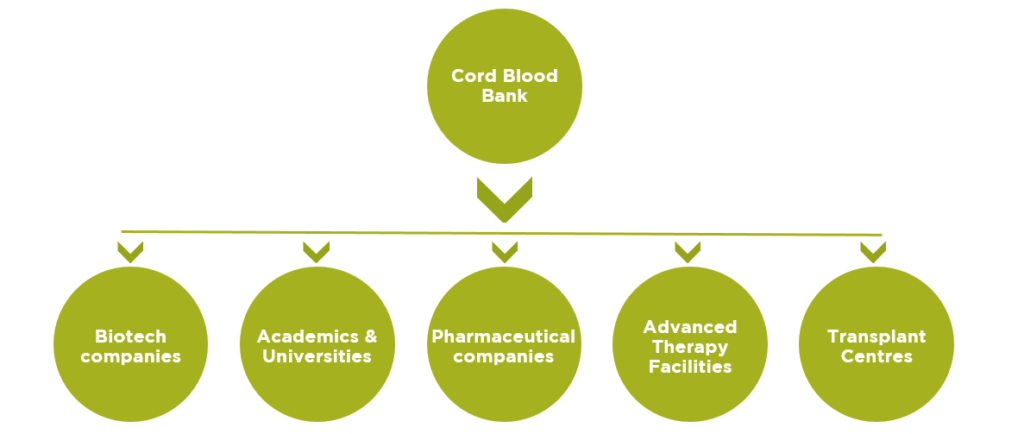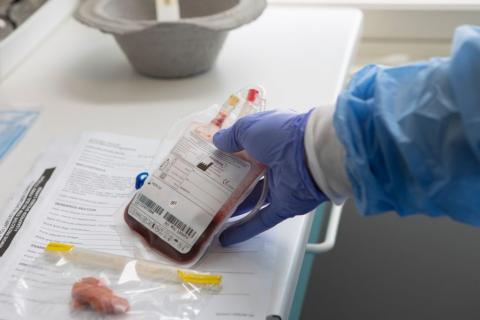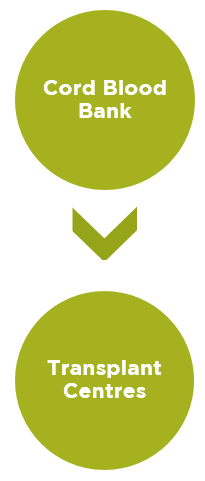Umbilical cord blood (UCB) has huge potential, not only as a successful alternative source of hematopoietic blood cells for transplant/clinical application, but in research and development too. However, too often UCB is overlooked and seen as just an alternative, leaving it an under-utilised resource.
UCB in transplantation
The advantages of UCB as a source of hematopoetic blood cells for transplant/clinical application are clear:
- It’s a highly regulated and accredited material. For example, in the UK, the Anthony Nolan Cord Blood Bank is HTA licensed and FACT Netcord accredited
- UCB is easy to collect with donor’s consent, with no risk to the donor
- We have access to a large donor pool with a wide variety of HLA tissue types and diverse ethnic backgrounds
- It can be available at short notice and can be shipped globally by professional couriers
- It has a lower degree of stringency in HLA matching requirements compared to adult unrelated donors. 4/6 or 5/8 transplantation is common within malignant diseases (for adult unrelated donors this is usually 9/10)
- There are low rates of high-grade graft vs host disease (GvHD) as a result of cell naivety in UCB
- More than one UCB unit can be used for transplant when a single one has insufficient cell dose
- UCB has shown low relapse rates and good 5-year overall survival - for Anthony Nolan cords the 5-year overall survival is currently 81%
As a result, the historic usage of cord has been very uniform and looked a lot like this:
UCB’s potential
For the last 10 years, the Anthony Nolan Cell Therapy Centre in Nottingham has collected, processed stored and delivered cord blood units (CBUs) to transplant centres to provide lifesaving transplants for patients with blood cancer and other haematological conditions.
However, not all cord blood units are suitable for traditional transplantation due to the relatively high cell doses required for successful engraftment. As a result, a significant amount of material is available for academic research, biotech, pharma and novel cell therapy clinical trials.
It’s our aim to maximise the use of the cords that our fantastic donors give to us in order to prevent wastage of such a unique and flexible material. To-date, we have helped over 60 research groups gain access to cord material for their needs both in pre-clinical research, development of new cell therapies and application in clinical trials.
Diversifying usage
Many of the benefits of cord blood listed above apply to end users involved in advanced therapies’ development, particularly with regards to HLA plasticity, the naivety of the cells and the ability of cord blood cells to expand in culture.
Cord blood has been used as a source of haematopoietic stem cells (CD34+ cells) for the development of some cell base therapies such as Natural Killer (NK) cell-based therapies. Cord tissue is available as well as blood, for the isolation of mesenchymal stromal cells (MSCs) which can also be used in a wide range of applications, e.g. therapies involved in immune modulation.
As such, the potential usage of cord should be much more varied and viewed more like this:

Working together
The Anthony Nolan Cord Blood Bank (CBB) and the Anthony Nolan Research Institute (ANRI) works collaboratively with all the institutions shown above, bringing our own expertise to the table to assist the end user to maximise the usefulness of the materials provided.
Our services and expertise include:
- Expertise in cell processing
- Expertise in regulation and accreditation
- In-depth understanding of cord selection and bio-variability, in order to standardise the starting material
- Established facilities at the CBB and ANRI
- Proven scientific expertise in the biology of cord blood cells, their characteristics and in vitro manipulation
Cord is often seen as a cheaper, viable alternative to adult material which is readily available for research. But time and time again, evidence points to the fact that cord is not simply an alternative, but also a valuable source of haematopoietic stem, progenitor and mesenchymal stem cells with unique properties.
Of course, there are research projects that require adult material, and that’s why we offer both cord and adult starting material to our clients. We provide consultancy and guidance to help them select the most appropriate and cost-effective material, but ultimately our clients have the power to decide what suits their needs best.

